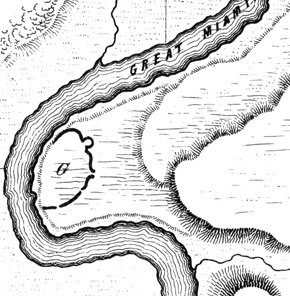DUNLAP'S STATION
GREAT MIAMI VALLEY
GREAT MIAMI VALLEY
DUNLAP'S STATION
Across the river from Fernald is the historic cemetery for Dunlap’s Station, the site of particularly barbaric clashes, on both sides, during the struggle over southwest Ohio lands. Cross to the east shore of the river on US 27 north of Ross, then head southwest on East Miami River Road for just under 2 miles; the cemetery entrance will be on the right just before Heritage Park.
In the late 1700s, settlers ventured farther and farther north of the Ohio River along the tributary valleys, building cabins, planting crops, grazing cattle, and creating fort-like settlements called “stations” – the most northerly along the Great Miami was Dunlap’s Station, also called “Coleraine.” It was located next to an enormous 95-acre D-shaped Hopewell era enclosure, with walls nine feet high. Yet the settlers became victims of a “most severe attack by Indians” in 1791, who, besides killing and burning, also tortured a captive man to death by setting a fire on his abdomen (the story of his night-long screams became part of Ohio anti-Indian lore).
In a similarly savage vein, though, the army lieutenant in charge of defending the station boasted of a set of Indian scalps his men had taken. Today both the ancient Indian enclosure and the fort are long gone, though the cemetery remains.

The ancient earthen enclosure adjacent to the site of Dunlap’s Station, near Ross in Hamilton County, was illustrated by Squier and Davis in 1848.